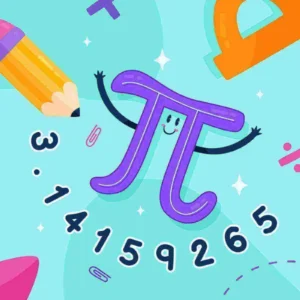Just as multiplication corresponds to repeated addition,

Exponentiation corresponds to repeated multiplication.

Exponentiation: Base and Exponent
In the above-generalized formula for exponentiation, x is called the base, and the superscript (raised letter) n is called the exponent.
xn is read as “x raised to the nth power” which is often abbreviated as “x to the nth”.
Exponentiation: Exceptional cases
When the exponent is 2, it is considered a special case so that x2 is commonly referred to as x squared (instead of x to the 2nd power). The fact is, the area of a square with side x is x2, and thus the origin of the term “x squared.”
Similarly, the exponent 3 is also considered as a special case as x3 is commonly referred to as “x cubed” (instead of x to the 3rd
power). The volume of a cube with side x is x3 and thus the origin of the term “x cubed”
Few more examples of Exponentiation with a power of 10
Let’s see few more examples based on what we learned so far
If the number 10 appears 4 times in repeated multiplication, we can write 10•10•10•10 which equals 10000. This expression is also written as a power, 104, where 10 is the base and 4 is the exponent.
Expressing a number in a power of 10
Any number can be expressed in terms of powers of 10. For example,32,586.49 is also written as 32,586.4910―where the 10 subscript designates the base of the number). By default the base of any number is always considered to be 10. It can be expressed as :
3•104 + 2•103 +5•102 + 8•101 + 6•100 + 4•10-1 + 9•10-2.
We automatically assume the base 10 if no other base is specified.
Expressing a number in a power of 2
Next, consider a number with base 2. For example 1111012 (note that the 2 subscript to the right of the number designates the base of the number. 2 indicates the number is base 2 or binary). You can express this binary number in terms of powers of 2, or
1•25 + 1•24 +1•23 + 1•22 + 0•21 + 1•20 = 32 + 16 + 8 + 4 + 0 + 1 = 6110.
We can also use exponents to simplify the repeated product of the variable x:
x•x•x•x = x4
Negative Exponents:
Exponents may also be negative. By definition, x–1 = 1/𝑥, so that 2–1 = 1/2. In general, any base raised to a negative exponent, x–n can be rewritten with the same base having a positive exponent as 1/𝑥𝑛. So that we have
x-n =1/𝑥n
Thus, 10-4 is equivalent to:
10-4 = 1/104 =1/10•10•10•10 =1/10000= 0.0001
Similarly, if we have a negative exponent in the denominator, 1/𝑥−𝑛, we can write the same base with a positive exponent in the numerator; thus,
1/𝑥−𝑛 = xn
Example of negative exponents:
As another example, we can write positive exponents as negative exponents and negative exponents in the form of positive exponents.
a−4b2c−3/d−5 in terms of only positive exponents:b2d5/a4c3
Any number raised to power 0 is always 1
Any number raised to power 1 is always that number.
Few Simplified properties of Exponentiation to remember:
Since 32•34 = (3•3)(3•3•3•3) = 36, this leads to the property that
xa • xb= xa + b.
34/32 is equivalent to34/ 32 = 3•3•3•3•3 / 3•3 = 32. This leads to the property that
𝑥𝑎/𝑥𝑏 = xa – b.
Finally, we have the case of (32)3 which equals: (3 • 3) 3 = (3 • 3) (3 • 3) (3 • 3) = 36. This leads to the property that
(xa)b= xa•b.
Now, let’s consider a combination of these exponentiation properties by considering: (4x-3y-4)-2.
This is equal to 4-2(x-3)-2(y-4)-2 = (1/42).x6y8 = 𝑥6𝑦8/16 .Alternatively,
(4x-3y-4)-2 = 1/(4𝑥−3𝑦−4)2 = 1/42𝑥−3•2𝑦−4•2 = 1/16𝑥−6𝑦−8 =𝑥6𝑦8/16 .
Examples are taken from math book with solutions provided by hackonmath
Conclusion of Exponentiation:
- x0 = 1
- x1 = x
- xn = 1/x-n
- 1/x-n = xn
- x-1 = 1/x
- xa+xb = xa+b
- xa/xb = xa-b
- (xa)b = xa.b
`
FAQ:
(10^5)/(10^2)
1000
(3^2)x(3^3)
3^5
5^1
5
9^0
1
7^-1
1/7
1/(y.y.y)
y^-3
(5^2)^3
5^6
(x^5)/(x^2)
x^3
(x^3)^4
x^12
Rewrite in positive exponent w^2.x^-3.y^-4.z^-5
w^2/(x^3y^4z^5)
Rewrite in positive exponent (a^2c^-6xd^-3)/(b^-4e^-5)
(a^2.b^4e^5x)/(c^6.d^3)
Rewrite in positive exponent (3x^-2y^-3)^-3/z^-4
(x^6y^9z^4)/27

Pingback: Rounding off numbers - Math Hacks
Pingback: Rules for Multiplying and Dividing Integers - Math Hacks
Pingback: 5 Killer Steps to Round Off Numbers Quickly and Accurately with This Simple Formula That Works Every Time! - ClusterBooks - The Books Marketplace
Pingback: No. #1 Rules for Multiplying and Dividing Integers - ClusterBooks - The Books Marketplace